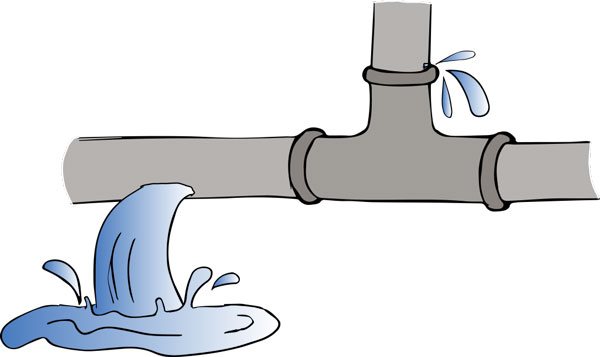What are leaks?
Leaks on the wiring harness
In Denmark, we have a considerable groundwater resource with high-quality raw water. Therefore, the raw water undergoes only a few necessary processes before it is distributed to the consumer as drinking water.
Although the reserves are considerable, the reservoirs are not bottomless. Therefore, it is important that we take care of our limited drinking water resource. It is on the journey between the waterworks and the consumer that leaks occur.
Leaks are broken pipes and pipes, and they result in the clean drinking water flowing directly into the surrounding environment. The size of leaks varies, and anything from a few liters to hundreds of cubic meters of water can flow out per hour. Holes in drinking water pipes are disadvantageous as water loss drains our valuable water resource.
In addition, it is a large financial expense that can be easily saved through professional leak detection.
The faster the leaks are located, the faster the fractures can be repaired. It is not only the drainage of natural resources and economy that is problematic in the event of leaks. When water flows out of the pipelines, it can have negative consequences for the surrounding environment and infrastructure.
An open leak can be to blame for the coincidence of pavement, such as sidewalks and cobblestones, in that the water erodes sand and soil layers, thereby challenging the foundation. In addition, fractures can result in water damage to buildings.

Why do leaks occur?
Leaks occur on the distribution network for many reasons. Drinking water pipes in Denmark are often located at a depth of 0.8-1 meters. Classic examples of causes of leaks are increased pressure on the surface at a road bend or a bus lane.
The pressure will not only wear on the asphalt on the ground, it can also have consequences in depth, which can result in fractures. Temperature variations throughout the year affect the soil layers, where contractions and expansions will occur on an ongoing basis, which can also result in leaks.
Manual errors in excavation work or the like can also cause leaks. In addition, pressure and flow in the pipeline itself can also affect the service life of the pipe. Too high a pressure will press the material and thus increase the probability of fracture. With changing flow variation during the day, the material can also be challenged.
Today, materials are used for pipes and wires such as PVC, cast iron, concrete and plastic.





